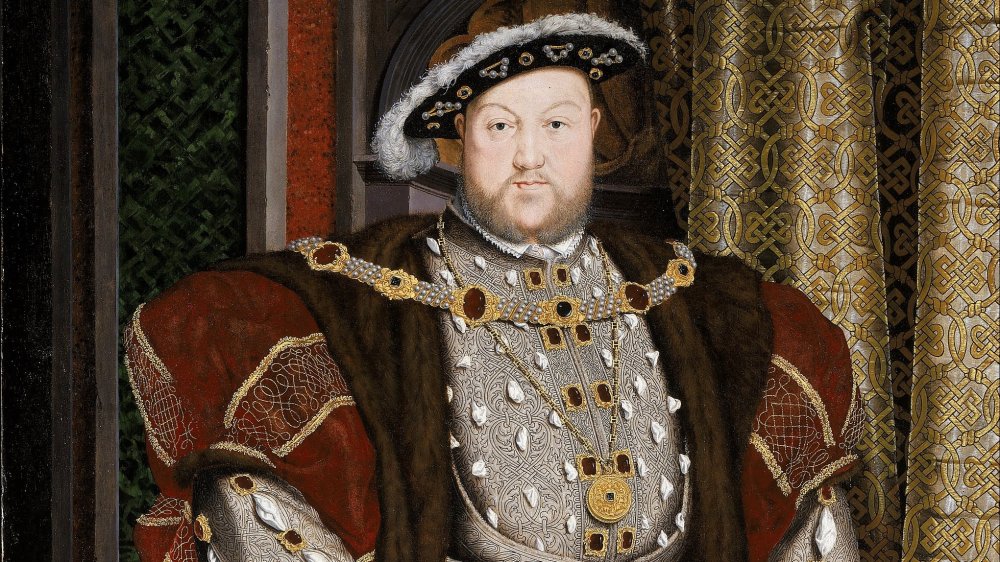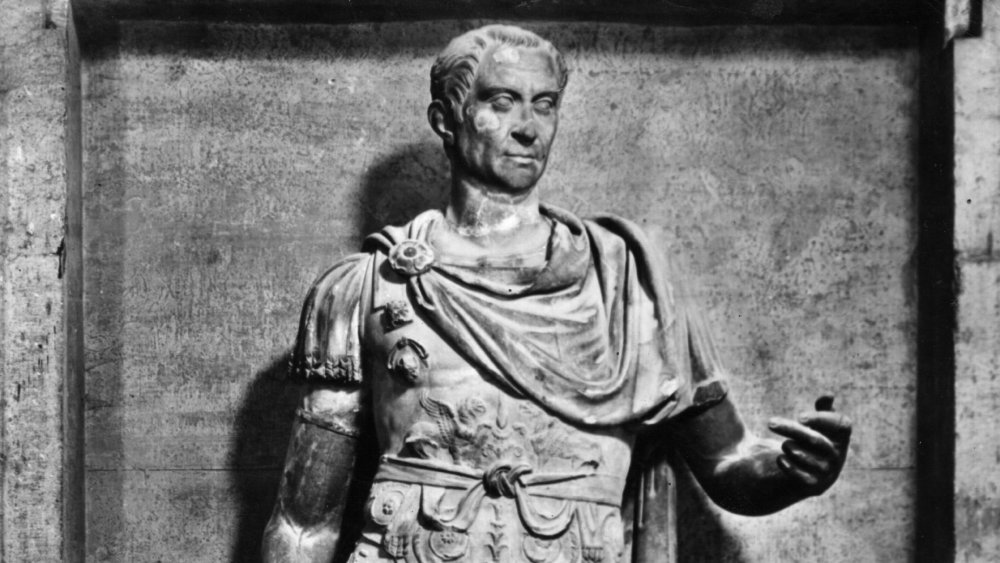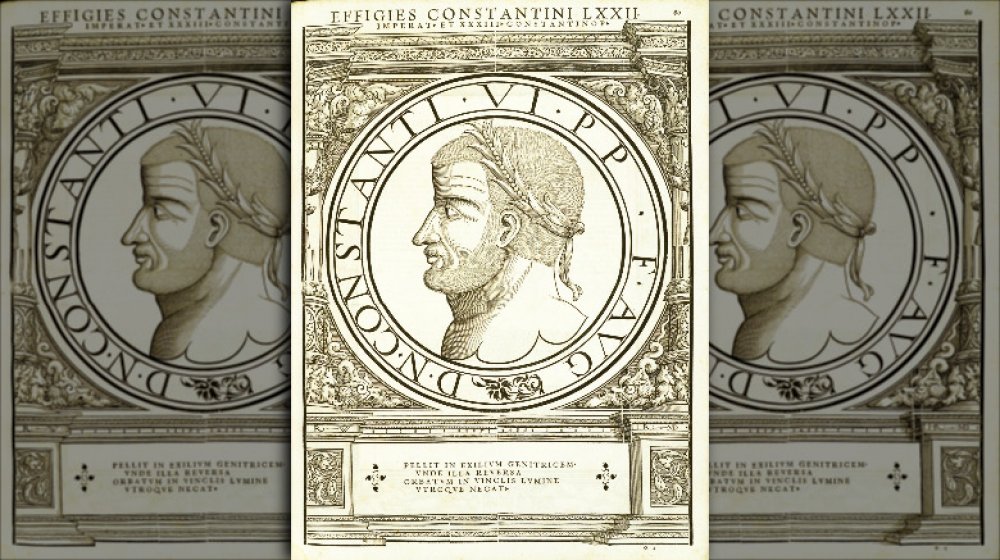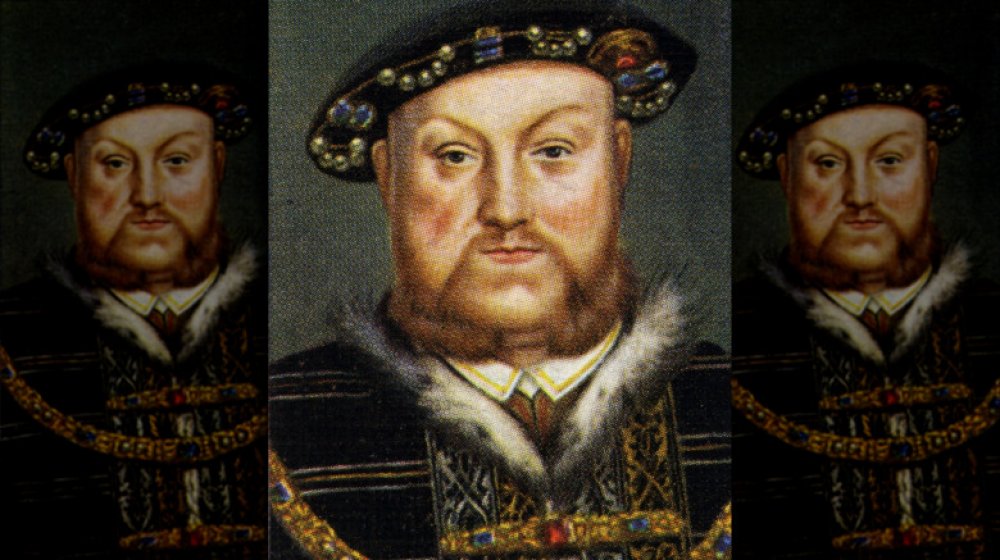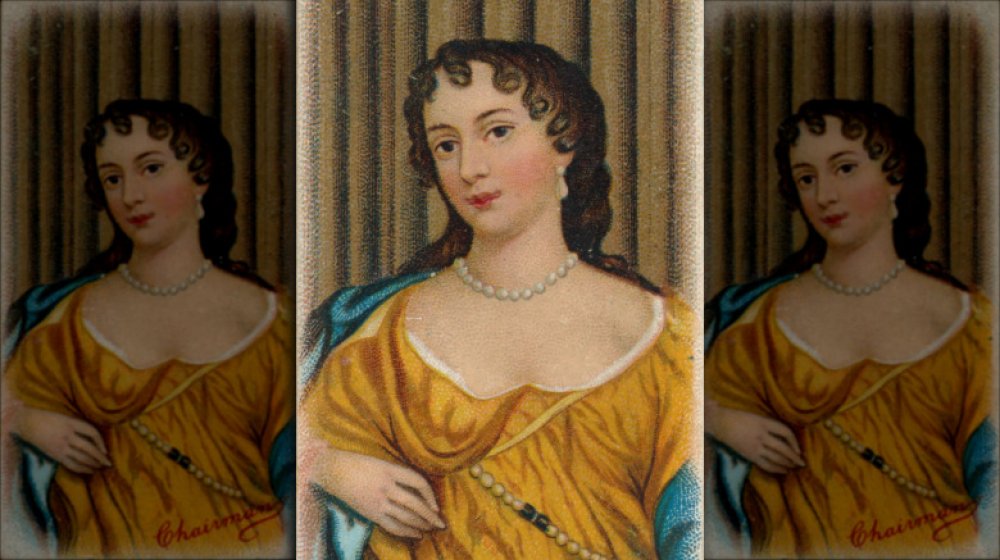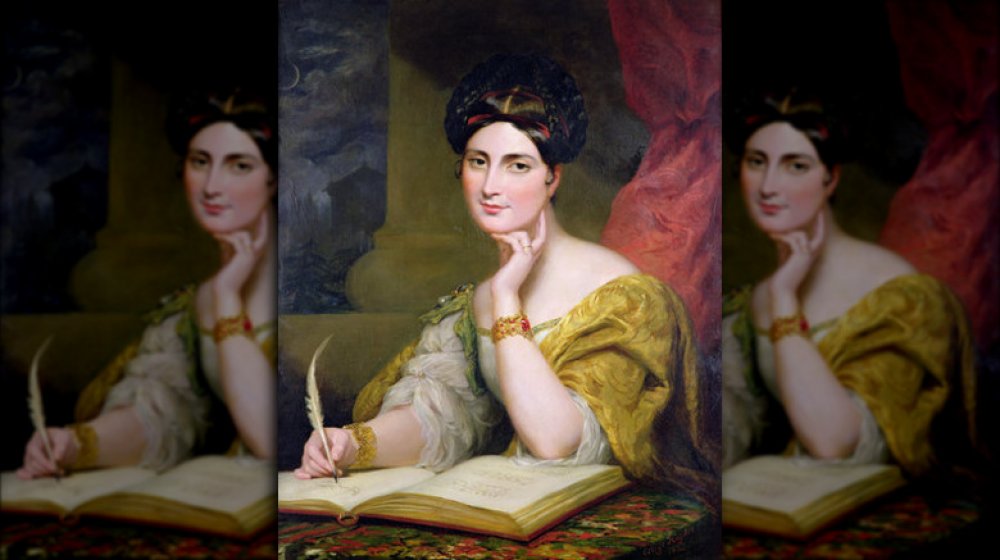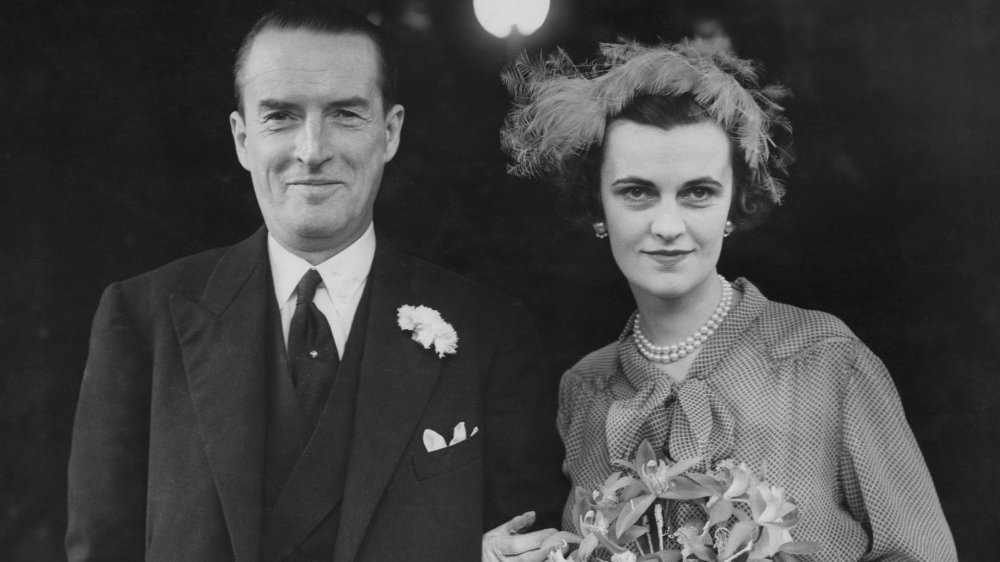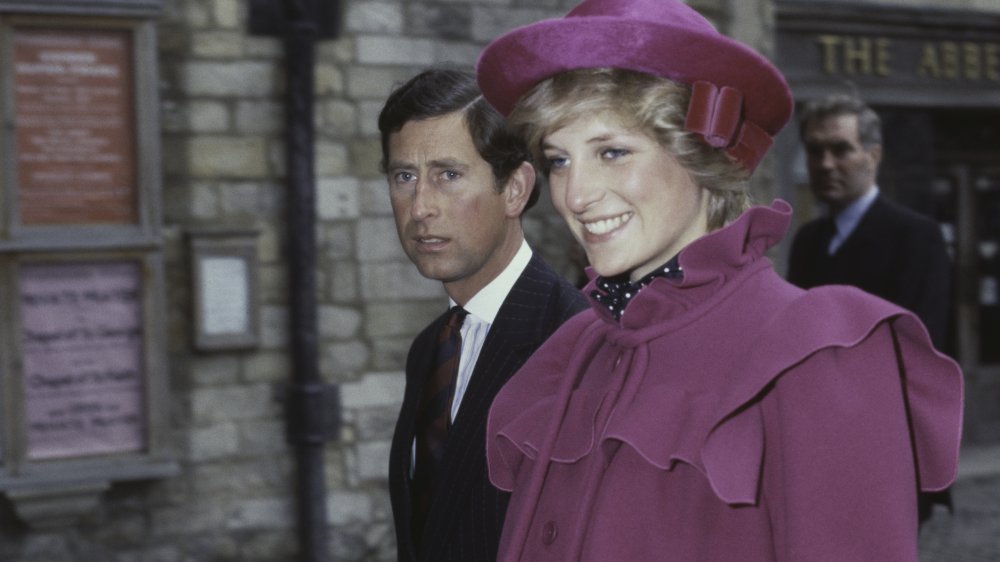The Most Scandalous Divorces In History
Times change, but divorce remains a traumatic and frequently scandalous affair. By the time a marriage winds up in divorce court, it's safe to assume the relationship has soured, naturally. And soured relationships can mean bruised feelings, resentment, and a strong desire to negatively affect the other person's life and livelihood. That makes someone else's divorce proceedings pretty good entertainment in general — especially if the revelations are salacious.
The end result is often an epic airing of dirty laundry and less-than-righteous behavior. While most divorces are businesslike affairs severing ties and negotiating assets, throughout history, there have been plenty of splits that have sent shock waves throughout decent society because of what caused them, what they revealed, or the violence with which they were pursued.
One of the more surprising facts concerning the most scandalous divorces in history is how far back that history stretches. We think of divorce as a modern invention, but the legal mechanism has been around for a very, very long time. And some of the most scandalous divorces happened a long, long time ago — which doesn't mean the details of the proceedings are any less entertaining to our modern sensibilities. In fact, quite the opposite.
Julius Caesar and Pompeia
When we think of Julius Caesar, we think of the fall of the Roman Republic and the rise of the Roman Empire. Caesar was (literally) a dictator, and his assassination on the Ides of March, intended (somehow) to restore the republican form of government, instead led to a lengthy civil war that ended with his adopted son as the first emperor.
Before all that, however, Caesar was a politician. A member of one of Rome's oldest families, he served in a wide variety of public offices as he rose in prominence. In 69 B.C., Caesar's wife died, and he left to serve as a quaestor, an administrative position, in Spain. As author Adrian Keith Goldsworthy notes, when he returned, he married a woman named Pompeia, who was politically connected as the granddaughter of Sulla, who had revived the office of dictator in Rome decades before.
Caesar went on to serve as the pontifex maximus, or high priest, of Rome (an elected position). History reports that Pompeia organized a women-only festival known as the Bona Dea at their home — but a political opponent disguised himself as a woman and infiltrated it, attempting to seduce Pompeia. The scandal was real. Many believed Pompeia had arranged the festival so she could carouse with her lover. This was a blasphemy and caused a lot of gossip about Pompeia's morals. Caesar, mindful of his public reputation, quickly divorced her, offering the famous phrase "Caesar's wife must be above suspicion" as his reason.
Emperor Constantine VI and Maria of Amnia
The Roman Empire lasted for a long time, but its history was chaotic. By the eighth century, the western part of the Empire had fallen, while the East, now known as the Byzantine Empire to distinguish it from the original, lasted into the 15th century. Constantine VI ruled as emperor from 780 until 797 — and he lost his throne, his sight, and his life because he divorced his first wife.
According to Encyclopedia Britannica, for the first ten years of his reign, Constantine VI was under the thumb of his mother, Irene, who held the actual power. When he finally took power for himself, he had his mother arrested but later relented and took her back as a co-ruler. Things were fine until Constantine decided he was tired of his wife, the popular Maria of Amnia. He divorced Maria and married his mistress Theodote, which was problematic because the divorce was probably illegal — even a Roman emperor couldn't just snap his fingers and end a marriage as far as the church was concerned.
As author Jennifer Lawler writes, when Constantine further infuriated everyone by punishing monks and others who had spoken out against the divorce, Irene seize her chance and orchestrated a coup in 797. She had her son blinded, and he probably died from those injuries. In the end, there are no winners in this story. The brutality of Constantine's punishment turned public opinion against Irene, and a few years later, she was deposed in turn.
Charlemagne and his unnamed second wife
If you ever want an idea of how women were treated throughout history, consider the fact that the woman Charlemagne, the first holy Roman emperor, took as his second wife isn't even named in any contemporaneous accounts. She might have been named Desiderata after the king of the Lombards, Desiderius, but we're not entirely sure.
As author Roger Collins notes, Charlemagne — who was still just king of the Franks — married the unnamed woman in 771 in order to forge an alliance with the Lombards and the pope against his own brother, Carloman. By binding his kingdom to that of the Lombards and the papacy, he had Carloman's holdings surrounded physically and his brother isolated politically.
But then Carloman died in late 771, and Charlemagne no longer needed the alliance. Scandalously, he didn't bother with any sort of legal proceeding — sure of a new pope's support, he simply sent his wife back to the Lombards and considered himself divorced, greatly insulting them. As Esquire points out, this sparked a decades-long conflict in the region that eventually created the political scenario which ultimately led to Charlemagne being named holy Roman emperor in 800.
King Henry VIII and Catherine of Aragon
King Henry VIII of England was a marrying man, accumulating six wives — two of whom he had executed when they became inconvenient. His first wife, however, Henry divorced — something that required truly Herculean effort, as they'd been married for nearly 20 years at the time, and the Catholic Church frowned on divorce.
Catherine of Aragon had been the wife of Henry's older brother, Arthur. As Town and Country reports, Arthur was just 15 when they married, and already sickly. When he died only five months after the wedding, Catherine insisted they had never consummated the marriage, and she married Henry in 1509. As History makes clear, by the late 1520s, Henry was unhappy. Catherine had failed to bear him a legitimate male heir, and he'd noticed the beautiful and much younger Anne Boleyn and decided he'd rather marry her.
Needing an argument to justify the divorce, Henry decided, 20 years later, that Catherine had been lying about her time with Arthur. If she had actually consummated that marriage, then Henry had been lied to and tricked into marrying her, and thus the union could be dissolved. Catherine, however, refused to play along — which, as Bustle points out, forced Henry to basically create his own church and make himself head of it in order to legally split from Catherine and marry Anne — a woman he had beheaded three years later when she, too, failed to deliver him a son.
Willmott and John Bury
Willmott and John Bury aren't famous people. They weren't royalty, or rich, or entertainers. And they didn't technically divorce — instead, they were involved with an annulment. But their story changed the law when it came to annulments.
As Smithsonian Magazine points out, prior to the modern age, women didn't have a lot of options when it came to divorce, but they could have a marriage annulled — if they could prove that the marriage had never been consummated, since the purpose of marriage in the eyes of the church was reproduction. It was an option of last resort, because proving it involved proving that you'd never had sex.
In 1561, Willmott Bury asked that her marriage to John Bury be annulled, asserting that he'd never consummated the marriage because he'd been left impotent by a kick from a horse (ouch). The annulment was granted, and both Willmott and John quickly married other people. John then caused a scandal when he promptly fathered a son. As author Alan Haynes writes, this meant that both new marriages were invalid and led to a flurry of lawsuits concerning Bury's estate. The whole embarrassing episode resulted in new legislation that voided any annulment if the husband proved to be sexually capable after the fact.
Barbara Villiers and Robert Fielding
By the time Barbara Villiers married Robert Fielding, she was the comfortably rich duchess of Cleveland — and former mistress of King Charles II. In fact, Villiers had been one of Charles' most favorite mistresses, which explains the riches and the noble title.
As Smithsonian Magazine notes, Villiers was 64 when she met Robert Fielding, a 54-year-old with a very bad reputation. Blinded by love, the Duchess married Fielding in 1705. What she didn't know is that Fielding had married a woman he thought was a wealthy widow named Anne Deleau, hoping to get his hands on her fortune. But as the Chicago Tribune reports, Anne Deleau was also a grifter — and she'd conned Fielding. She was actually a prostitute, and she began blackmailing him. As Fielding began stealing from Villiers to pay Deleau off, he also somehow found the time and energy to seduce Villiers' granddaughter.
Freed from playing the role of doting husband, Fielding beat Villiers so savagely that she actually jumped through a window to escape him. Luckily for Villiers, Fielding's prior marriage made it very easy to divorce him. Unluckily for her, she discovered that he'd taken almost all of her money — and that her granddaughter was pregnant with his child.
Caroline and George Norton
Prior to the 20th century, women had a pretty raw deal when it came to marriage. Anyone who's read a Jane Austen book knows that women lost their right to own property when they got married and didn't even have any rights when it came to their children. In the event of a divorce, custody was automatically granted to the father. This was weaponized by George Norton, a powerful politician in 19th-century England. As The Conversation reports, George abused his wife Caroline both physically and verbally, but she refused to be cowed. In retaliation, she made fun of him in public and flirted outrageously with other men. In other words, it was a very happy marriage.
When George had enough, he actually accused the prime minister of England of having an affair with Caroline, which served the dual purpose of giving him grounds for a divorce and undermining the opposition party. The gambit failed, and the Nortons separated — but this left Caroline without any rights, and George refused to let her see her children. Caroline mounted a furious public relations campaign that ultimately shamed Parliament into changing the law. Even after the Nortons divorced, the new law stipulated that the mother retained custody until her kids were seven years old and had access to them thereafter.
George retaliated by sending the kids to Switzerland, where the law didn't apply, and only relented and let Caroline see her children after one of their sons died unexpectedly.
The duke and duchess of Argyll
Ian Douglas Campbell, 11th duke of Argyll, married his third wife, Ethel Margaret Whigham, in 1951. The marriage was an adventurous one. As The Independent notes, Margaret soon had a reputation for having love affairs at a furious pace. By 1959, they were separated, and the duke had even obtained a legal order to bar her from the family home. Divorce followed — and soon exploded.
The duke hired detectives and began searching his wife's belongings for evidence to use against her — and hit upon the mother lode: a diary detailing her affairs, a series of photographs depicting the duchess engaged in adult acts with two men (their faces not in the photos, making them the Headless Men in the press), and another series of pictures showing the private parts of one of the men with handwritten notes on them.
As The Guardian reports, the British government — reeling at the time from the Profumo sex scandal — worked to hide the identity of one of the Headless Men because he was part of the government. (The second man, it turns out, was Hollywood star Douglas Fairbanks, Jr.) The duke eventually named no fewer than 88 men as the duchess' lovers. The judge in the case came down hard in the duke's favor, calling Margaret's activities "disgusting."
Charles and Diana
For modern-day scandal, nothing beats the prince and former princess of Wales, Charles and Diana. As History notes, their marriage was a big deal in 1981: Nearly a billion people watched the wedding on television. People describing the lavish ceremony (it had 2,650 invited guests) tended to use the phrase "fairy-tale."
After 15 years and two children, Charles and Diana divorced. The royal family's resistance to the idea of divorce can't be overstated, so it took years to convince the queen of its necessity. As became increasingly clear, the main reason for the end of their marriage was a tale as old as time: Charles was, and had always been, in love with someone else.
As Reader's Digest reveals, despite claims of being "just friends," Diana was so suspicious of Charles' affections for Camilla Parker-Bowles that she almost called off the wedding. It was heartbreakingly clear that Charles had fallen in love with Camilla years before but that she was deemed inappropriate for the future king of England, and Charles was convinced to give her up, which he did — except in his heart. Charles kept up the fiction until 1994, when he finally confessed to having an affair with Parker-Bowles. The divorce was a tabloid frenzy. Diana was very popular, and Charles was ... not.
The divorce was so juicy, in fact, that it made certain that Diana would be constantly hounded by paparazzi. She died tragically just a year later while trying to flee reporters in Paris.
Tiger Woods and Elin Nordegren
When Tiger Woods married Elin Nordegren, he was the greatest golfer in the world, on his way to shattering several all-time records. The couple were married for five years and had two children, and everything seemed perfect ... until November 27, 2009.
As USA Today reports, that night, Woods crashed his Cadillac Escalade into a fire hydrant near their home. When the police arrived, the windows of the car were smashed in, apparently by Woods' own golf clubs. It was sketchy — and a few days later, the public found out that Woods had been having an affair with a New York City nightclub hostess, Rachel Uchitel.
But this was just the tip of the iceberg. Nordegren told ABC News that she initially wanted to work through their problems and try to save the marriage, but more affairs came to light. And then more. As NY Magazine notes, the final number of affairs Woods was linked to was a stunning 121. Woods admitted he was a sex addict and entered a rehabilitation program, but the marriage was over: Forbes reports that Tiger Woods' ex, Elin Nordegren, eventually got a $100 million settlement, which averages out to $20 million per year of marriage, making it one of the most expensive divorces of all time.
Christie Brinkley and Peter Cook
Celebrity divorces aren't uncommon, and things can get a little nasty from time to time. Prior to the whole Johnny Depp and Amber Heard saga, the nastiest celebrity divorce of recent years award probably went to Christie Brinkley and Peter Cook. The dissolution of their marriage was not only extremely humiliating (mainly for Cook), but it was also surprisingly public.
As the New York Daily News reports, Brinkley discovered that Cook was having an affair. That's bad enough, but her 47-year-old husband was cheating on her with an 18-year-old woman he'd hired as an assistant. Worse, he'd given his lover $300,000 of his wife's money to keep quiet, as well as several other gifts.
To say the former supermodel was enraged would be an understatement. As Slate notes, despite the potential harm the testimony could do to the children, Brinkley pushed to have the divorce proceedings be very, very public in order to hurt and humiliate Cook. As a result, the fact that Cook spent $3,000 a month on Internet porn and frequently sent nude photos of himself to "swinger" websites came out in public, as did the fact that their young son stumbled onto his father's porn stash. In the end, the strategy worked. Cook received a cash settlement, but Brinkley got custody of the kids and all of her properties — while Cook's reputation suffered tremendously.
Johnny Depp and Amber Heard
No matter how much time passes, scandalous divorces are a renewable resource. When actor Johnny Depp married actress Amber Heard in 2015, cynics expected it to end in tears. But no one could have predicted the train wreck that is the ongoing divorce proceedings and ancillary lawsuits stemming from their separation.
As The Washington Post reports, it all began when Heard filed for divorce in 2016, citing irreconcilable differences. She asked for and got a restraining order against Depp, accusing him of physical abuse. They eventually negotiated a $7 million divorce settlement which included a "non-disparagement" clause, barring them from spilling tea on each other, which Heard violated — according to Depp — in 2018 when she published an op-ed in the New York Post about domestic abuse. Depp's name doesn't appear in the piece, but it's pretty clear who she's referring to. So Depp sued.
The floodgates opened. Heard once again accused Depp of being an addict and an alcoholic who beat her up. Depp accused Heard of beating him up and of faking her injuries, including using makeup to make herself look bruised. Depp sued Heard for breaking their agreement and sued the Post for defamation. As USA Today reports, so far, the revelations include the abuse of an adorable puppy, human excrement left in a bed, screaming fights, and at least one attempt to cut off a finger. And with all the litigation going on, this is probably just the beginning.
